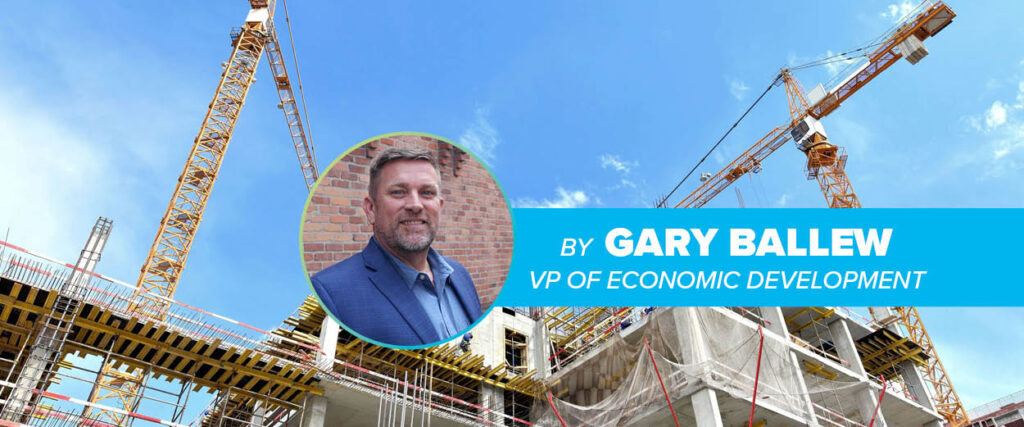By Gary Ballew, CEcD, VP, Economic Development

If you have driven west on I-90 you may have noticed a number of massive buildings under construction with the Amazon distribution facility one of the most prominent. What you might not know is that Spokane and the United States have been in an industrial real estate boom for most of the past decade. When will the boom end? No one really knows but there were some interesting reports recently.
Before talking about the end, let’s talk about the beginning. What drove this rapid increase in industrial real estate? E-commerce was much of the force behind the rapid expansion and much of it driven by Amazon. While consumer use of e-commerce certainly increased over the past decade and rapidly during Covid, the biggest driver was next-day delivery.
Those of us born before 1990 remember a time when we would order from a catalog (sort of like an e-commerce platform but made out of paper) and we would be happy with our 6-8 weeks delivery. Today our expectation is much shorter with next-day or same-day delivery not out of the question. When you order online and that item comes to you the next day, it means the product has to be pretty close to where you are geographically.
Seeing the trend, Amazon knew it needed to build more distribution space everywhere. Amazon’s largest bricks and mortar competitor, Walmart, is already close to everywhere in the United States. It is estimated that over 90% of the US population lives within 30 minutes of a Walmart. To keep pace Amazon built and they built really fast.
According to a mix of sources, there is about 10 billion square feet of warehouse space in the United States and according to Material Handling & Logistics we added a billion square feet over the last ten years but nearly a billion square feet of space is over 50 years old and is becoming obsolete. Modern logistics call for larger buildings, bigger clear heights (floor to ceiling), more loading docks, and fewer columns.
Our friends, Mark & Tracy Lucas and Tracy Poff at Kiemle Hagood recently put out their Industrial Market Survey for 2022. In the first decade since 2000, we added 2.8 M square feet of warehouse space, averaging just under 0.5 M square feet per year. In the last decade, we added 13.1 M square feet, averaging 1.2 M square feet per year. Even with this massive increase, vacancy rates since 2010 averaged 3.4%, less than ½ of the 7% seen in the first decade of this century. Most of that growth occurred in the last five years, adding 9.1 M square feet with vacancies hovering around the 2% mark.
Should we expect this growth to continue? Probably not. There were numerous reports of Amazon stepping back from its aggressive growth strategy last year, putting projects on hold and even vacating some space. Also, while we continue to shop online at a much higher rate than pre-pandemic, about 15% to 10% respectively, the rate of growth has slowed. This leads to slowing demand for new warehouse space. An article in the Puget Sound Business Journal noted that warehouse supply outpaced demand for the last two quarters of 2022.
While the fast growth is likely at an end, with vacancy rates as low as they are we can expect the new buildings in the pipeline to do fairly well. Here at GSI, we will continue working to grow existing companies and recruit new companies to help fill that space. Having a little capacity in the system is a good thing for economic development, just not too much.




